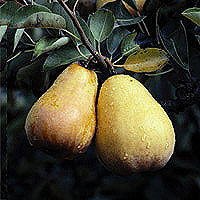Gluten Free
What does following a gluten-free diet mean? That you're embarking on an easy diet with a wide range of health-promoting effects. Instead of dwelling on what you’re giving up, consider that you’re going to enjoy a whole new world of delicious food options to meet your special dietary needs. You’ll be eating seasonally, choosing more fresh fruits and vegetables, focusing on meats, seafood, poultry, legumes, lentils, corn, and rice, and discovering fascinating ancient grains such as quinoa, amaranth, and millet. You’ll be able to eat potatoes, eggs, most cheeses, even chocolate (!)—and enjoy them without guilt because you’ll be taking good care of your body. In fact, you’ll probably end up eating—and feeling—better than ever!
Visit this page for more information about living Gluten Free
---
We carry a large variety of gluten free items, the brands listed below represent just some of the offerings we carry















More Diets
Pears

Varieties
With over a thousand hybrids, pear trees are easily crossbred, but named varieties are typically grafted as, like squash varieties, they do not grow true from seed. Leading varieties include the following:
Anjou
Also known as the Beurre variety, Anjous originated in France. Their skin is yellow-green or light green, and they have tender, juicy flesh that is less granular than other types.
Bartlett
Called the Williams pear in England, this is a very popular variety that ripens to bright yellow from light green. There is also a Red Bartlett. Bartlett pears are delicious eaten out of hand and also are excellent when cooked.
Bosc
The Bosc is native to Belgium and has distinctive, thick, brown to yellow-brown, non-shiny russet skin. This pear has an obvious neck and distinctly crisp-textured flesh. It is used in cooking and baking, as well as for eating raw.
Comice
These pears derive their name from the phrase, Doyenne du Comice, meaning, “top of the show,” as they are often celebrated as the best pear variety. Originating in France, they are now grown in North America and have yellow-green or russeted skin, ripening to pinkish-brown. The flesh is smooth, juicy, and a warm, creamy white.
Conference
These are English winter pears that have taupe skin, and are long and slender in shape. The variety was named for the award it received at the 1885 International Pear Conference.
Passe-Crassane
This pear is a pear-quince hybrid that was developed in Normandy, in the north of France. It is particularly useful in cooking, because of its firm, grainy flesh, but is also tasty eaten raw.
Copyright © 2025 TraceGains, Inc. All rights reserved.
Learn more about TraceGains, the company.
The information presented in the Food Guide is for informational purposes only and was created by a team of US–registered dietitians and food experts. Consult your doctor, practitioner, and/or pharmacist for any health problem and before using any supplements, making dietary changes, or before making any changes in prescribed medications. Information expires December 2025.











